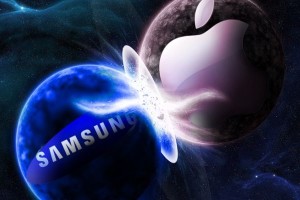 The iPhone 6 has sold so well that Apple tied with Samsung for the top position in the smartphone market in the fourth quarter, closing the gap with its South Korean competitor.
The iPhone 6 has sold so well that Apple tied with Samsung for the top position in the smartphone market in the fourth quarter, closing the gap with its South Korean competitor. It’s a big change from a year ago, when Apple’s iPhone 5s only helped the company gain a 17.6 percent share of the market, as opposed to Samsung’s near 30 percent share.
The data from Strategy Analytics comes a few days after Apple reported huge profits of $18 billion made in last year’s fourth quarter, from record sales of its new smartphone.
“Demand for iPhone has been staggering, shattering our high expectation,” Apple CEO Tim Cook said in an earnings call.
He added that the smaller iPhone 6 was the better selling of the two models, but that some markets preferred the bigger iPhone 6 Plus. Although the U.S. still remains the company’s largest market, China was another major contributor to the phone’s sales in the quarter, with sales in the market up by over 100 percent year over year.
Samsung isn’t faring as well in the smartphone market. It is losing market share at the high-end to the iPhone 6, and at the mid-tier and low-end range to products from Chinese vendors Huawei and Xiaomi.
“Samsung may soon have to consider taking over rivals, such as BlackBerry, in order to revitalise growth this year,” Strategy Analytics said in a statement. But for the whole year 2014, Samsung still remained the top smartphone vendor, with a 24.7 percent share, followed by Apple, which had a 15 percent share.
Trailing far behind the two players is third placed Lenovo, which acquired Motorola Mobility from Google last year. By buying the U.S. handset maker, Lenovo’s market share in the fourth quarter reached 6.5 percent.
Huawei was in fourth place during the quarter, with a 6.3 percent share.
Overall, the world’s smartphone market grew 31 percent during the period, with shipments reaching a record 380.1 million units.





